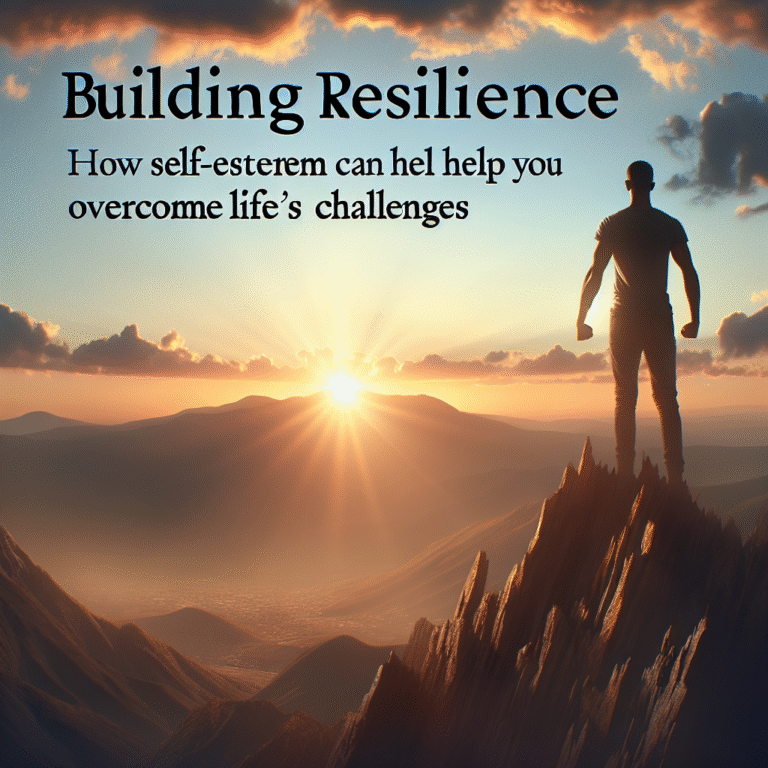
Introduction
In a world where self-doubt looms large, the journey to self-belief is both a quest and a necessity. Imagine waking up every day fully equipped with the unwavering belief that you are capable of achieving anything you set your mind to. This powerful conviction doesn’t just transform your mindset but has tangible effects on your relationships, career, and overall well-being. Welcome to The Science of Self-Esteem: How Believing in Yourself Transforms Your Life. In this article, we’ll delve into the psychological research supporting self-esteem, explore real-world case studies, and provide actionable insights to help you cultivate profound self-belief.
Understanding Self-Esteem: The Foundations
What is Self-Esteem?
Self-esteem is often defined as how we perceive our worth and value as individuals. It encompasses beliefs about oneself, emotions, and an overall evaluation of one’s abilities. A healthy level of self-esteem is crucial; it can directly influence your decision-making processes, how you relate to others, and even your mental health.
Table 1: Levels of Self-Esteem
| Level | Description |
|---|---|
| High | Strong belief in capabilities and worth, often leads to positive outcomes. |
| Moderate | Balanced view; individuals can navigate challenges effectively. |
| Low | Negative self-image; may result in anxiety, depression, and poor decision-making. |
The Science Behind Self-Esteem
Research shows that self-esteem is not a singular trait but a multi-faceted construct influenced by various internal and external factors. According to psychologist Nathaniel Branden, self-esteem is the sum of self-acceptance and self-worth. Both components play a crucial role in forming a robust foundation for self-belief.
Case Study: The Influence of Positive Affirmations
In a study published in the Journal of Personality and Social Psychology, researchers found that participants who practiced positive affirmations exhibited a significant increase in self-esteem compared to those who didn’t. Affirmations like "I am enough" not only solidified their sense of worth but also positively impacted their academic and personal lives.
The Ripple Effect: How Self-Esteem Transforms Lives
Relationships
Believing in yourself can redefine your relationships. When you possess high self-esteem, it allows for more authentic connections. You’re more likely to set healthy boundaries, communicate effectively, and foster deeper connections. Consequently, others are drawn to your confidence, creating a positive feedback loop.
Career Advancement
Self-belief is integral in a professional landscape filled with competition. Individuals with high self-esteem often pursue challenging roles, negotiate better salaries, and advocate for their ideas. According to a study conducted by the American Psychological Association, employees with elevated self-esteem report higher job satisfaction, which further propels their career progression.
Mental and Physical Health
The connection between self-esteem and mental health cannot be overstated. Various studies indicate that individuals with higher self-esteem experience lower levels of anxiety and depression. Physically, this self-belief can lead to healthier lifestyle choices—those who believe in their worth are more inclined to exercise, eat well, and attend regular health check-ups.
Chart 1: Self-Esteem and Mental Health Correlation
| Self-Esteem Level | Anxiety Level | Depression Level |
|---|---|---|
| High | Low | Low |
| Moderate | Moderate | Moderate |
| Low | High | High |
Practical Strategies to Boost Self-Esteem
1. Set Achievable Goals
Establishing achievable, measurable goals can enhance your confidence and contribute to building a positive self-image. Start with smaller objectives that lead to a bigger picture.
2. Practice Self-Compassion
Many people are their own harshest critics. Practicing self-compassion allows you to treat yourself with kindness. A study from the Self and Identity journal suggests that individuals who score high on self-compassion exhibit higher self-esteem.
3. Surround Yourself with Positive Influences
Your environment plays a significant role in shaping your self-perception. Surrounding yourself with supportive people can foster a healthier self-esteem. People with positive beliefs about themselves can uplift others’ spirits as well.
4. Engage in Positive Self-Talk
Replace negative self-talk with affirmations that inspire action. For instance, instead of saying, “I can’t do this,” start to say, “I am capable and ready to face challenges.”
5. Seek Professional Guidance
If low self-esteem is significantly impacting your life, seeking help from a certified therapist or psychologist can provide invaluable insights and strategies for improvement.
Real-World Applications: Inspiring Case Studies
Case Study: Mindset Shift in Sports
Consider the case of Michael Jordan, widely regarded as one of the greatest basketball players of all time. Jordan faced numerous challenges, including being cut from his high school basketball team. Instead of succumbing to self-doubt, he adopted a mindset focused on growth. His belief in himself led to relentless hard work, ultimately resulting in a prolific career characterized by resilience and excellence.
Case Study: The Impact of Education
Another compelling example is the Dale Carnegie Course, which emphasizes the role of self-belief in professional development. Participants frequently report that their confidence improves significantly after completing the course. These individuals often pursue new job opportunities or promotions they initially deemed unattainable, reinforcing the premise that self-esteem plays a pivotal role in success.
Conclusion
The journey towards understanding The Science of Self-Esteem: How Believing in Yourself Transforms Your Life is one filled with opportunities for growth and development. As we’ve explored, self-esteem is a powerful variable influencing not only our mental health but also our relationships and career trajectories. By adopting effective strategies to cultivate self-belief, you can embark on a transformative journey towards a more fulfilling and successful life.
As you move forward, remember: self-esteem is like a muscle; the more you exercise it, the stronger it becomes. Choose to believe in yourself, and watch as you transform your life for the better.
FAQs
1. What are some signs of low self-esteem?
Common signs include negative self-talk, fear of failure, and difficulty in maintaining relationships.
2. How long does it take to improve self-esteem?
Improving self-esteem can vary by individual; however, consistent practice of self-compassion and positive self-talk can yield noticeable changes within weeks.
3. Can self-esteem be influenced by childhood experiences?
Yes, early experiences, family dynamics, and peer relationships often shape one’s self-esteem. Positive reinforcement during formative years can lead to healthier self-views.
4. Are there any books you recommend for improving self-esteem?
Yes! The Gifts of Imperfection by Brené Brown and The Six Pillars of Self-Esteem by Nathaniel Branden are excellent resources.
5. How can I support a friend with low self-esteem?
Encourage them through positive affirmations, offer support without judgment, and suggest professional help if necessary. Being a good listener and showing genuine care can also be extremely beneficial.
By embracing the core concepts detailed above, you can embark on a journey of enhancement and empowerment, reinforcing the critical understanding that believing in yourself is truly transformative.
















